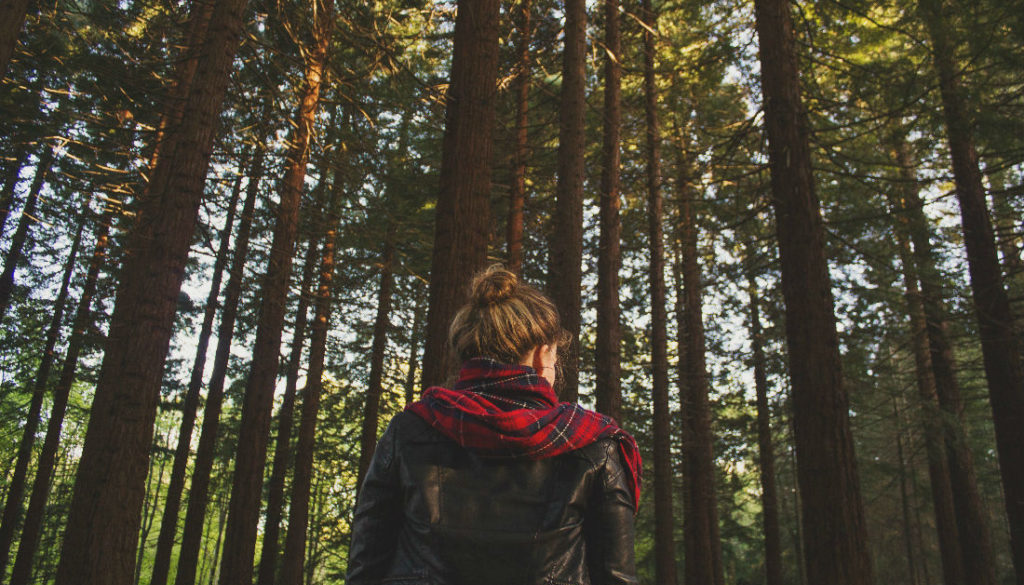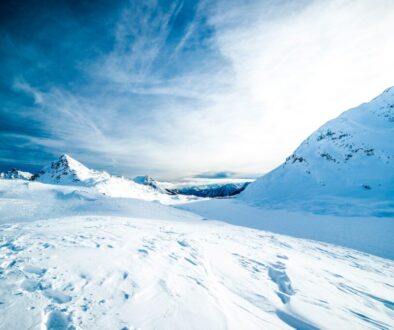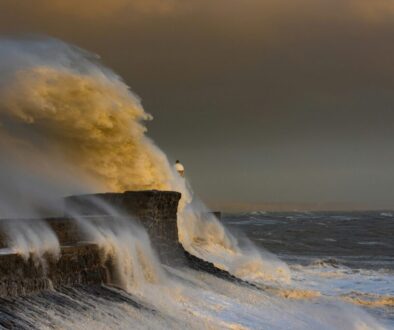Where the wild things are – a ‘future natural’ countryside?
Recent years have seen proposals to reintroduce lynx, wolves and bears into the countryside. The idea has captured the public imagination – but what does “rewilding” mean for rural communities? Jessica Sellick investigates.
In 2011, I visited Ennerdale Valley – home to more than 100 species of wildlife, slopes lined with forest, open fell and scree. William Wordsworth said whoever made the long walk to Ennerdale would discover ‘a vista which cannot fail to strike the most indifferent observer with astonishment and pleasure’.
Wild Ennerdale, a partnership bringing together the Forestry Commission, Natural England, the National Trust and United Utilities with landowners since 2005 has been allowing ecosystems throughout the valley to evolve with greater freedom. Conifer plantations have been removed, three herds of black Galloway cattle reintroduced, heathland and peatbog restored and the removal of concrete bridges has seen the River Liza shift its course.
Wild Ennerdale is now one of the longest running ecological restoration projects in the UK. Proposals to turn other areas of land back to their ‘natural state’ or some kind of ‘future natural’ are gaining currency. What is rewilding, where is it happening and what does it mean for rural communities? I offer four points:
First, what is rewilding? There is no single definition, with the term broadly used to describe ‘the process of giving space within human-dominated landscapes back to nature’. In policy circles, the Parliamentary Office of Science and Technology (POST) describes rewilding as the restoration of natural processes that are self-regulating; reducing the need for human management of land. The Government itself has no specific policy covering rewilding.
Back in 2011, the Department for Environment, Food & Rural Affairs (Defra) command paper ‘the Natural Choice’ sought to recognise the value of the services and goods that nature provides to us. The then Coalition Government promoted an integrated approach to nature and a resilient ecological network – leading to the creation of Local Nature Partnerships (LNPs) and Nature Improvement Areas (NIAs).
The subsequent publication of Biodiversity 2020 sought to halt overall biodiversity loss and support well-function ecosystems. Both documents stem from the UK National Ecosystem Assessment and in wanting to introduce the value of nature into decision-making.
For proponents, rewilding is seen as the latest step or opportunity for Government to improve the UK’s natural capital and/or as providing a cost effective way of restoring habitats.
In academic circles, the concept is often aligned to conservation or biology. Ecologist Shahid Naeem describes rewilding as ‘the process of reintroducing locally extinct species’; for staff at the Centre for Research into Environmental and Ecological Modelling (CREEM) based in St Andrews in Scotland rewilding is ‘protecting species near or at the top of the food chain in large connected areas’; and geographers Jonathan Prior and Kim Ward regard it as ‘a process of (re)introducing or restoring wild organisms and/or ecological processes to ecosystems where such organisms and processes are either missing or are dysfunctional.’
In the popular media, George Monbiot in his book ‘feral’ aligns rewilding to ecological boredom and argues humans are made to engage with a world full of big animals.
Geographer Paul Jepson and Frans Schepers from Rewilding Europe present rewilding as a multifaceted concept with three broad dimensions that interact with each other: (1) restoring natural flows and ecological dynamics; (2) a graduated and situated approach where the goal is to move up a scale of wildness within the constraints of what is possible; and (3) developing new natural heritage and value that evokes the past but shapes the future.
While interest in rewilding has increased in recent years, there is some confusion about the ‘re’: is rewilding a process of connecting to the past or is it a new way of realising humans how humans sit side-by-side with nature and wilderness? As there is no one definition of rewilding could it lead people to be excluded from natural and wild places?
Secondly, where are the wild spaces?
The IUCN has seven Protected Area Categories – with the first category (1a) being the wildest ‘strict nature reserve’ and the seventh being ‘protected area with sustainable use of natural resources’. The Serengeti makes the second category; Yellowstone in United States the third category and much of Britain the sixth category. The European Environment Agency (EEA) uses the spatial attributes of naturalness and remoteness to map wilderness quality (with a spectrum from least to most wild). The European wilderness continuum map categorises England and Wales as ‘artificial surfaces’ with 0-50% wilderness, with parts of Scotland having up to 90% wilderness.
According to the continuum, the wildest parts of Europe are Iceland, Norway and Sweden which have up to 100% wilderness ranking on some of their landmass. A wilderness register and indicator for Europe has been prepared by the European Commission. This uses existing databases to identify areas of wilderness and wild areas. The European Wilderness Society has a Quality Standard and Audit System, to serve as a basis for wilderness protection, designation, restoration and promotion.
Meanwhile Scottish Natural Heritage (SNH) has mapped Scotland’s wilderness and wild land. SNH considered the perceived naturalness of land cover, the ruggedness of the terrain, remoteness from public roads/ferries/railway stations and visible lack of buildings, roads and other modern artefacts. The latest SNH map (published in 2014) identifies 42 areas of wild land.
There is no standard measurement of wild or wilderness, with some measuring the land and its flora and fauna and others measuring the quality of human experience in these places. Yet research led by the Wildlife Conservation Society (published in September 2016), reveals one-tenth of the world’s wild land has been lost in the last two decades and how at current rates of decline there will be no significant areas of wilderness in less than 100 years.
Thirdly, what kinds of rewilding are taking place in the UK? Rewilding Europe wants to rewild one million hectares of land by 2022.
The organisation facilitates the European Rewilding Network, which includes Kneep (where herds of wild ponies, cattle, deer and pigs roam 3,500 acres of the Sussex countryside); provides capital loans to new and existing businesses that want to leverage economic opportunities created by rewilding (e.g. nature tourism); and has a wildlife bank with plans to rewild horses in Europe (include Exmoor), bison and Tauros. Rewilding Britain, is aiming to build a database of rewilding projects – with current projects in England including Knapp, Wild Ennerdale and The River Wandle.
They are also seeking to develop resources for people who want to bring back rewilding to their garden or other small space. By 2030 their goal is “300,000 hectares of core land areas and three marine areas established where nature is starting to take care of itself and key species are starting to be re-established. These areas will be: i) ecologically connected into a more wildlife-permeable landscape; [and] ii) supported by an engaged, enthused and education public.” In one of their recent publications, the organisation set out the role of rewilding in flood management. In Scotland, the National Species Reintroduction Forum (NSRF) has assessed the impact of the reintroduction of the Eurasian beaver to Scotland on Atlantic salmon and brown trout.
Taken as a collective, these rewilding projects are characterised by existing and largish areas of wild land, by the reintroduction of keystone species and by a commitment to connecting (physically or virtually) wild places. Although united by practices of ecological integrity (restoring habitats through introducing communities of animals), economic rejuvenation (nature tourism) and/or cultural preservation (flood prevention); they open up a series of discussions about what, where and how rewilding is (and should be) taking place in the UK?
What ecosystem/s do we want to restore and to what category of wilderness? Should we only be encouraging conservation of native habitats, fauna or flora (and in places where animals are or were recently in situ)? What is the monetary cost of reintroduction and should we do this for all species, even those that are not endangered or under-threat?
What are the animal welfare issues for domestic and native animals from the reintroduction of predators? Should habitats that depend on agricultural practices be omitted? Where do people fit in reintroduction and any ongoing management? With few rewilding projects underway in the UK and across Europe, many are being measured using qualitative methods and/or in ways that make establishing a baseline and comparable data difficult – what benefits, costs, impacts and outcomes is rewilding delivering at an individual project and country level?
Finally, what does all this mean for rural communities? Rewilding is bringing different groups of people with different values of nature to the fore. While the concept is gaining scientific, policy and popular media presence, there is a growing body of work highlighting how rewilding could adversely affect some land users. The CLA, for example, is not against species re-introductions but believes it is essential that a costed risk based assessment is undertaken and that projects should be on a voluntary basis at the initiative of the individual landowner or land manager – here rewilding is seen as part of a productive landscape and not about land abandonment.
The NFU points out that farming practices are already enhancing the environment and that rewilding often neglects the economic impact and contribution the industry makes to the economy and communities. For me, rewilding needs to be reconciled with – and have consent from – rural residents, businesses and landowners. To see where and how rewilding is feasible requires economic, social, environmental and legal assessments. In the meantime, for those wanting to see lynx’s, wolves or bears in the countryside, the patchwork of land ownership in rural England complicates the idea of allowing big animals to roam.
Whether rewilding offers an inexpensive and sustainable way to create wild/natural places (for people and animals) or is idealistic and wishful thinking; the concept is no longer at the fringes of a green movement but becoming mainstream. So what kind of rural landscape/s do we want?
…………………………………………………………………………………………………
The RSN is taking bookings for the 2016-2017 Seminar Programme For more information or to book your free place at one of our events please contact events@sparse.gov.uk
…………………………………………………………………………………………………
Jessica is a researcher/project manager at Rose Regeneration; an economic development business working with communities, Government and business to help them achieve their full potential. She produces evidence bases for Local Authorities, Local Enterprise Partnerships and the governing bodies of designated landscapes. Jessica recently prepared two Community Led Local Development applications and completed a European project on the social value of volunteering into employment.
Her public services work includes research for Defra on alternative service delivery and local level rural proofing. Jessica can be contacted by email at jessica.sellick@roseregeneration.co.uk, or telephone on 01522 521211. Website: RoseRegen; Twitter: RoseRegen.



